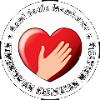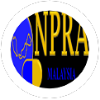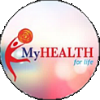WHAT ARE SPRAINS AND STRAINS?
Sprains and strains are injuries to the ligaments and tendons of a joint. Sprains causing stretching or tearing of ligaments while strains causing overstretch or tearing of the muscle or tendon. Both conditions result in pain and swelling.
People often get sprains and strains when they fall, twist an arm or leg, play sports or involve in extreme physical activities.
SIGNS AND SYMPTOMS
Sprains
- Pain
- Swelling
- Bruising
- Loss of ability to move and use the joints
- Sometimes people might hear a ‘pop’ and feel a tear in the joints when the injury happens
Strains
- Pain
- Muscle spasm
- Muscle weakness
- There may be localized swelling, cramping, or inflammation and in more severe strain can lead to loss of muscle function.
- Severe strains are often very painful and results in having trouble to move
PREVENTIVE MEASURES
- Start exercise slowly and begin an exercise program doing things that are easy to you. Build up gradually before indulging the vigorous level.
- Warm up your muscles with slow, easy stretches before you exercise. This should be done in any sports
- Ease up when you feel the muscles or joints start to hurt. Do not over do it.
- Cool down after a hard exercise to relax the muscles. For example, slow down for a couple of minutes after running by walking.
- Wear appropriate outfit. For example, wear shoes which fit you and suitable for the type of exercise. The soles must be made from non-skid materials.
- Use braces or tapes that give a good support such as at the ankle joint.
- Avoid activities on slippery, wet or uneven surfaces, or in areas with poor lighting.
- Maintain good general fitness.
- Eat a well-balanced diet to keep muscles strong.
- Maintain a healthy weight.
SELF CARE
RICE
RICE (Rest, Ice, Compression and Elevation) is an immediate self-management for sprain and strain.
Rest / Immobilization:
Keep the injured part from moving around. Support the affected area in the most comfortable position.Ice:
Cold helps reduce pain and swelling. Apply ice cubes or cold pack to the injured part until numbness is felt or the skin becomes pink (about 10 – 20 minutes). It may be reapplied every hour for the first 48 – 72 hours until the skin around the injury feels warm to the touch.Compression:
Apply a firm compression bandage during and after icing to reduce the swelling. The bandage should not be too tight as the muscles may swell, causing further discomfort, numbness or tingling. In certain situation, a splint may be required. Keep bandaged while there is still swelling, taking care not to cut the circulation.Elevation:
Elevation of the injured part above the level of the heart helps fluid drain away from the injury; thus, minimizing swelling and pain. This is most important in the first 24 hours for severe injuries and while applying ice.
Note: If there is any doubt about the condition, treat it as fracture and shift to hospital.
DECREASE ACTIVITY
If the injury is affecting the ankle or knee, avoid weight bearing or walking, use crutches if necessary. As pain and swelling decreasing in 2 to 3 days-time, gradually start using and moving the injured part. Most sprains and strains will be better within 3 to 4 days, and significantly improved within one week.
Chances of full recovery will be better by avoiding the H.A.R.M factors in the first 48 hours.
- Heat (H): as it increases swelling and bleeding.
- Alcohol (A): as it increases swelling and bleeding.
- Running or exercise (R): as it aggravates the injury.
- Massage (M): as it increases swelling and bleeding.
Others activities that should be avoided are :
- Doing activities while having an injury after relieving the pain with painkillers or local anesthetics sprays.
- Using elastic bandages, which may exert compression instead of support.
WHEN TO SEE A DOCTOR
See a doctor if :
- You have a severe pain and cannot walk or put any weight on the injured joint.
- The area at the injured joint or next to it is very tender when you touch it.
- The injured area swelled or has lumps and bumps that you do not see on the uninjured joint.
- The injured joint cannot be moved.
- Cannot walk more than four steps without significant pain.
- Your limb buckles or gives way when you try to use the joint.
- There is numbness at the injured area.
- Redness or red streaks spreading out from the injury.
- The area has been injured several times before.
- There is pain, swelling, or redness over a bony part of your foot.
TREATMENT
SELF MEDICATION – Medicines for Sprain and Strain
- Aspirin
- Diclofenac Sodium
- Mefenamic Acid
- Paracetamol
PRESCRIPTON-ONLY MEDICINE
- Celecoxib
- Etoricoxib
OTHER TREATMENT
- A lightweight lumbosacral corset : It may help to control muscle spasms. The corset should be discontinued as soon as the spasms have resolved.
REFERENCES:
- Malaysian Healthcare Guide; 1996, Medimedia Pacific Ltd., Malaysia.
- Self-care Pharmacy Health Information Bulletin.
- The Complete Guide To Symptoms, Illness And Surgery; (1996), Dr.
- Griffith, HP Books Inc., London, U.K
- http://content.health.msn.com/content/dmk/dmk_article_58379
- http://www.pharmacy.gov.my/self_care_guide
- http://sportsmedicine.about.com/cs/injuries/a/sprains.htm
- http://hcd2.bupa.co.uk/fact_sheets/html/sprained_ankle.html
- emedicine.medscape.com
- http://www.niams.nih.gov





 DUTA KENALI UBAT ANDA
DUTA KENALI UBAT ANDA KENALI.UBAT.ANDA@MOH.GOV.MY
KENALI.UBAT.ANDA@MOH.GOV.MY




